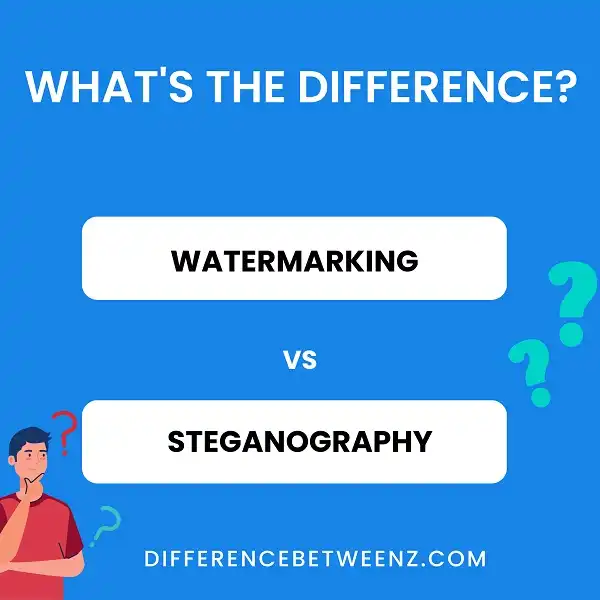Watermarking and steganography are two ways of protecting digital content. Both methods involve embedding data into a medium, but the way that the data is embedded differs significantly between the two techniques. Watermarking embeds information directly into the content, while steganography takes advantage of unused bits in the content to hide information. This makes watermarking less susceptible to detection, but it can also affect the quality of the content. Steganography is more expensive and time-consuming to set up, but it is more difficult to detect than watermarking. In most cases, watermarking is sufficient for protecting content, but steganography can be useful in special cases.
What is Watermarking?
- Watermarking is the process of embedding a digital watermark into a multimedia file. Watermarks are used for a variety of purposes, such as copyright protection, authentication, and tracking.
- There are two main types of watermarks: visible and invisible. Visible watermarks are typically used for copyright protection, as they make it clear who owns the content.
- Invisible watermarks, on the other hand, are typically used for authentication or tracking. They are embedded in the content in a way that is not visible to the naked eye, but can be detected by special software. Watermarks can be applied to many different types of files, including images, videos, and documents.
What is Steganography?
- Steganography is a technique for hiding information in plain sight. The word steganography comes from the Greek words steganos, meaning “covered,” and graphy, meaning “writing.” Steganography has been used throughout history to transmit secrets covertly.
- For example, during World War II, spies would send messages hidden in images. Steganography can be used to hide any type of information, including text, images, and sound files.
- Today, steganography is often used to protect digital information from being intercepted and read by unauthorized parties. Steganography can be used to protect information in transit or at rest. When used correctly, steganography is an effective way to keep information safe and secure.
Differences between Watermarking and Steganography
Watermarking and Steganography are two terms that are often used interchangeably, but there are actually some important differences between the two. Watermarking is the process of embedding a watermark, which is typically a logo or other identifying information, into a digital image.
- The watermark is generally visible and is meant to deter copyright infringement. Steganography, on the other hand, is the process of hiding information in a digital image.
- The hidden information can be anything from text to another image, and it is not visible to the naked eye. Steganography is often used for covert communication, such as passing messages between spies.
- Because the information is hidden, steganography is much more difficult to detect than watermarking. As a result, Watermarking and Steganography are two very different types of technology with different applications.
Conclusion
In this blog post, we’ve outlined the key differences between watermarking and steganography. Watermarking is a great way to protect your images from being copied or stolen while still allowing people to use them as they please. Steganography, on the other hand, is a technique for hiding data inside of an image or other type of media file. Both have their pros and cons, so it’s important to understand which one will work best for your specific needs.


